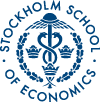No 398: Costs and Quality of Life in Multiple Sclerosis. A Cross-Sectional Observational Study in the UK
Gisela Kobelt, Peter Lindgren (), David Parkin (), David A. Francis (), Michael Johnson (), David Bates () and Bengt Jönsson ()
Additional contact information
Gisela Kobelt: Health Dynamics International Ltd., Postal: High Wycombe, United Kingdom
Peter Lindgren: Stockholm Health Economics Consulting AB, Postal: Stockholm, Sweden
David Parkin: Department of Economics, City University, Postal: London, United Kingdom
David A. Francis: Neurosciences Center, University Hospital Birmingham, Postal: Birmingham, United Kingdom
Michael Johnson: Department of Neurology, St Jame´s University Hospital, Postal: Leeds, United Kingdom
David Bates: Department of Neurology, Royal VIctoria Infirmary, Postal: Newcastle upon Tyne, United Kingdom
Bengt Jönsson: Dept. of Economics, Stockholm School of Economics, Postal: Stockholm School of Economics, P.O. Box 6501, S-113 83 Stockholm, Sweden
Abstract: Abstract: We performed a cross-sectional, "bottom-up" observational study of resource consumption and quality of life of patients with multiple sclerosis (MS) in the United Kingdom. Three centers participated in the study. Patients received a questionnaire either by mail or during a clinic visit, and a total of 619 patients returned the questionnaire (the answer rate being around 70%). Patients provided information on all resource consumption, medical and non-medical, work absence and informal care related to their MS. Disease scores (Expanded Disability Status Scale, EDSS) were available for a majority of patients from the study centers, and were assigned using a matrix of disease (mobility) descriptions and EDSS scores. Mean total cost per patient and year was 16’717 £. When this cost is extrapolated to an estimated patient population in the UK of 80’000, total costs to society are estimated at 1.34 billion £. Direct costs represented 28%, informal care accounted for 26% and indirect costs amounted to 46%. Of the direct costs, an estimated £ per patient or % of total costs are paid for by the NHS. Intangible costs were estimated at 5000 £ per patient and year.
The mean age of the cohort was 44 years (disease onset 34), the mean utility measured with EQ-5D was 0.487 (0.919 to –0.594), and the mean EDSS score 5.1 (1.0 to 9.5). All costs (direct, informal care, indirect) increased with increasing EDSS scores, while utilities decreased.
Keywords: multiple sclerosis; cost-of-illness; quality of life; EDSS; utility
JEL-codes: D61; H42; H51; H55; I18
35 pages, October 4, 2000
Full text files
hastef0398.pdfFull text
Questions (including download problems) about the papers in this series should be directed to Helena Lundin ()
Report other problems with accessing this service to Sune Karlsson ().
RePEc:hhs:hastef:0398This page generated on 2024-09-13 22:19:41.

